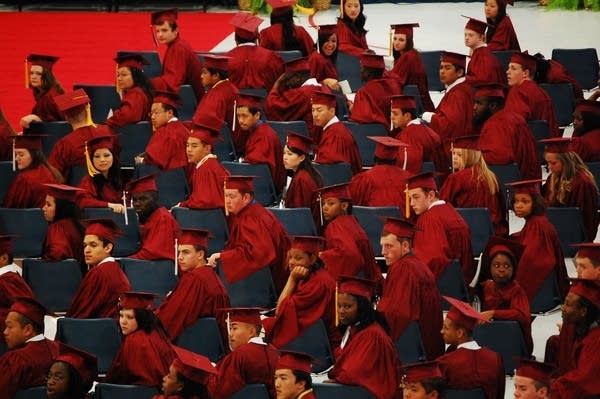MN near bottom in on-time graduation for students of color

The class of 2010 from St. Paul's Johnson High School at graduation.
Tim Post | MPR News 2010
Go Deeper.
Create an account or log in to save stories.
Like this?
Thanks for liking this story! We have added it to a list of your favorite stories.


